目次
- 1 Trump’s Rice Tariff Threat Exposes Japan’s Farm Crisis
- 1.1 Trump’s “700% Tariff” Claim and U.S.-Japan Trade Negotiations
- 1.2 The Reality of the “Reiwa Rice Crisis”
- 1.3 The Curse of 50-Year Production Adjustment Policy and JA’s Role
- 1.4 Government Response: Reserve Rice Release and Import Surge
- 1.5 Rice’s Position in U.S.-Japan Trade Negotiations
- 1.6 Lessons from Past Agricultural Trade Friction
- 1.7 Japanese Rice’s International Competitiveness and Export Potential
- 1.8 Manufacturing Impact: Ripple Effects of Tariff Policies
- 1.9 Ministry of Finance Recommendations and Reform Direction
- 1.10 Conclusion: Food Security and Agricultural Reform at a Crossroads
- 1.11 Related Articles
- 1.12 References
Trump’s Rice Tariff Threat Exposes Japan’s Farm Crisis
President Donald Trump has suggested imposing new tariffs on Japan, claiming the country is reluctant to import American rice. In a social media post, Trump stated, “Japan doesn’t want to buy our rice. Yet Japan has a serious rice shortage,” adding that the United States hopes Japan “will remain a trading partner for a long time to come.”
This statement comes against the backdrop of Japan’s “Reiwa Rice Crisis,” a severe rice shortage that has gripped the nation. However, the root of the problem lies not in simple import restrictions, but in structural issues within Japan’s agricultural policy spanning over 50 years. This article examines the impact of the Trump administration’s trade policy on Japan’s rice market and the fundamental problems in Japanese agricultural policy.
Trump’s “700% Tariff” Claim and U.S.-Japan Trade Negotiations
On April 2, 2025, President Trump claimed that “Japan imposes a 700% tariff on rice.” While not entirely accurate, this figure likely refers to part of Japan’s rice import system.
Japan’s Two-Tier Rice Import System
Japan’s rice import system consists of two layers:
1. Minimum Access (MA) Rice
Under the WTO agreement, Japan imports 770,000 tons of minimum access rice annually through state trading. This rice is tariff-free. MA rice is primarily used for processing, feed, and aid, with limited direct access to Japanese consumers.
2. High Tariffs on Out-of-Quota Imports
Rice imports outside the MA quota face a tariff of 341 yen per kilogram. This rate equals approximately 778% of the commodity price, effectively prohibiting imports. Trump’s “700%” claim likely refers to this out-of-quota tariff.
Current Status and Key Figures in Trade Negotiations
Kevin Hassett, Chairman of the National Economic Council (NEC), commented on Trump’s post: “Nothing is finished. I know what the president posted, but discussions will continue to the end,” suggesting ongoing negotiations.
Hassett, an economist who served as Chairman of the Council of Economic Advisers (CEA) during Trump’s first term and played a crucial role in designing and implementing tax cuts, now focuses on extending and improving tax measures, ensuring fair trade with countries that have taken advantage of the United States, and securing American prosperity while strengthening economic relationships with allies. He is considered a moderate compared to other candidates, acknowledging that tariffs could weaken economic growth while defending Trump’s trade policies.
Meanwhile, Jamieson Greer, the U.S. Trade Representative, is known as a China hawk who played important roles in imposing additional tariffs on China and renegotiating NAFTA during Trump’s first administration. Greer focuses on eliminating trade deficits, protecting U.S. manufacturing, agriculture, and services, and opening export markets. He has advocated for revoking Permanent Normal Trade Relations (PNTR) with China.
The Reality of the “Reiwa Rice Crisis”
From 2024 to 2025, Japan has experienced a severe rice shortage called the “Reiwa Rice Crisis.” During the week ending April 20, 2024, the average supermarket price for rice reached 4,220 yen per 5 kilograms including tax, double the previous year’s price—an extraordinary situation.
MAFF’s Contradictory Explanation and 390,000 Tons “Missing”
The Ministry of Agriculture, Forestry and Fisheries (MAFF) presented contradictory explanations to the Food and Agriculture Policy Council’s Food Division:
- Collection volumes by collectors decreased by 170,000 tons year-on-year as of September 2024
- By December, the decrease reached 206,000 tons (nearly 9% decline)
- However, MAFF claimed 2024 rice production actually increased by 180,000 tons
This explanation contains a contradiction where collection failed to capture more than the production increase, meaning 390,000 tons—equivalent to 6 billion bowls of rice—are “missing.” Wholesalers attending the meeting questioned whether production had actually decreased, with multiple participants agreeing.
MAFF consistently maintains that the cause is distribution bottlenecks rather than production shortages, shifting responsibility to wholesalers. They insist their “policies and projections were not wrong, and we are not at fault.”
Multiple Factors Behind Rice Price Surge
Direct factors contributing to the rice price surge include:
1. Weather Damage and Quality Decline
The 2023 rice crop suffered from extreme heat, drastically reducing the ratio of first-grade rice. Distributors excluded cracked and damaged rice from circulation.
2. Rapid Demand Increase
• Recovery in restaurant demand post-COVID (first demand increase since 2010)
• 110,000-ton increase from inbound tourism (though only 0.5% of total)
• Recovery in foot traffic from the pandemic
3. Supply Inelasticity
Rice and other grains typically have one harvest per year, making it impossible to quickly increase production in response to sudden demand. Production can respond at the earliest by September of the following year.
4. Distribution Structure Issues
Rice prices lack a public market (wholesale market), instead being determined through “negotiated prices” between JA Agricultural Cooperatives (Zen-Noh) and specific wholesalers, resulting in opaque price formation.
Industry insiders believe another rice shortage similar to the previous year is highly likely in summer 2025.
The Curse of 50-Year Production Adjustment Policy and JA’s Role
Experts point to the production adjustment policy (gentan) lasting over 50 years as the fundamental cause of the “Reiwa Rice Crisis.”
Reality and Problems of Production Adjustment Policy
The production adjustment policy aims to maintain high market prices by reducing rice production. MAFF has planned supply and demand based on the assumption that demand decreases by 100,000 tons annually, adopting production restrictions to avoid rice price declines.
While this policy was supposedly abolished in 2018, it actually continues to this day. The “Reiwa Rice Crisis” occurred because MAFF misread demand increases and production adjustments failed to keep supply in pace with demand.
Historical figures like Kunio Yanagita and Hajime Kawakami, who worked to alleviate farmer poverty, considered artificially inflating agricultural prices an unhealthy idea, advocating instead for cost reduction through scale expansion and productivity improvements. However, current Japanese agricultural policy has moved in the opposite direction.
JA Agricultural Cooperatives’ Economic Interests and Political Power
JA Agricultural Cooperatives’ existence underlies the continuation of production adjustment policy:
- Ending production adjustment and lowering rice prices reduces JA’s sales commission income
- If small-scale part-time farmers quit agriculture, JA Bank deposits also decrease
- Structural reform reducing farm households erodes JA’s political base
Critics argue that JA prioritizes its own economic activities over farmer interests, clinging to high rice prices and production adjustment policies. Japan is recognized as having “no other country continuing production adjustment for so long,” with greater benefits from producing more for export rather than restricting production.
Japan’s Agricultural Protection Peculiarity in International Comparison
While Europe and America have shifted to direct payments for farmer income protection, 70-80% of Japan’s agricultural protection comes from maintaining high prices. This results in consumers buying expensive food due to tariffs on imported products.
The U.S. and EU have already converted farmer income protection from high agricultural prices to direct government payments. Proposals suggest completely abolishing production adjustment and shifting to direct payments could lower rice prices while maintaining core farmers’ incomes and improving food self-sufficiency.
Government Response: Reserve Rice Release and Import Surge
Policy Shift to Reserve Rice Release
Facing continued high rice prices, the government changed course:
October 2024: Then-Agriculture Minister Sakamoto expressed concerns about rice price declines and announced no reserve rice releases
January 31, 2025: Government revised reserve rice operations, changing rules to allow releases even during distribution bottlenecks. Enabled practical lending operations with “sales to wholesalers on condition of buyback within one year”
March 3, 2025: MAFF announced reserve rice release tender notice. Conducted bidding March 10-12 targeting major collectors, with initial 150,000 tons of total 210,000 tons
March 14, 2025: Approximately 141,700 tons of 150,000 tons were bid, with average winning price of 21,217 yen per 60kg excluding tax
The government announced plans to shorten reserve rice storage from the standard 5 years to about 3 years and purchase domestic rice equivalent to country-specific import quotas as reserve rice, providing fresher supplies while maintaining tariff reduction/elimination exclusions for rice as a national staple.
Surge in Private Sector Rice Imports
Private companies have dramatically increased rice imports due to high domestic prices:
- 523 tons in February 2025 alone (exceeding fiscal 2024’s annual 368 tons)
- 991 tons in 10 months from April 2024 to February 2025 (over 2.6 times the previous year)
This occurs despite the 341 yen per kilogram tariff, as restaurants find imported rice more economical even with tariffs. While import surges may temporarily ease price pressures, they could long-term impact Japan’s food security and rice farmer operations.
Rice’s Position in U.S.-Japan Trade Negotiations
Trump Administration’s “Deal-First” Trade Policy
The Trump administration’s trade policy features:
- “America First” prioritizing trade deficit elimination
- Strategy of intentionally increasing uncertainty to extract concessions
- Aiming to zero out specific bilateral trade deficits
- Considering “reciprocal tariffs” imposing half the tariff rate needed to eliminate deficits
The Office of the U.S. Trade Representative (USTR) summarized in its March 2024 report that Japan maintains non-tariff barriers alongside automobiles. They view rice distribution systems and automobile safety standards as problematic “non-tariff barriers.”
Japanese Government Response and Concessions
The Japanese government views the Trump administration’s true aims as domestic production return, job growth, increased foreign investment, and export expansion. In response, Japan has made these concessions:
- Increasing U.S. investment to $1 trillion
- Announcing increased imports of U.S. liquefied natural gas (LNG)
- Requesting exemptions from steel, aluminum, and automobile tariffs
Regarding rice, reports suggest Japan considered expanding U.S. rice imports by around 70,000 tons tariff-free to secure review of automobile tariffs, the top priority in U.S.-Japan negotiations.
Political Backlash and Food Security Concerns
However, former Agriculture Minister Takumi Eto stated at a press conference: “If we rely heavily on overseas for rice, our self-sufficient staple food, Japan’s domestic rice production will decrease dramatically. Is that in the national interest?” He expressed negative views on rice import expansion.
Rice farmers back the Liberal Democratic Party’s powerful support base, the agricultural cooperatives (JA), and the ruling party wanted to avoid antagonizing JA ahead of summer Upper House elections.
Prime Minister Shigeru Ishiba expressed that Trump’s tariff measures are “extremely regrettable and unwelcome,” stating they would significantly impact not only U.S.-Japan economic relations but also the global economy and multilateral trading system, expressing serious concerns about consistency with WTO agreements and the U.S.-Japan Trade Agreement. The Prime Minister stated he would continue strongly requesting the U.S. to review measures and would not hesitate to directly appeal to President Trump if necessary.
Lessons from Past Agricultural Trade Friction
In past U.S.-Japan trade negotiations, beef and orange negotiations followed textiles and home appliances. However, important lessons emerged:
Even when Japan opened import quotas, Australian beef actually flooded in, with U.S. products failing to capture expected market share. This contradiction arose because the U.S. government focused on market opening as an end goal, neglecting follow-through to “make them buy American products.”
Similar patterns may emerge with rice. For the U.S., Japan is the third-largest agricultural export destination after Mexico and Canada, with about 45% of Japan’s total rice imports being American. However, simply opening markets without considering consumer preferences and distribution realities may not yield expected results.
Japanese Rice’s International Competitiveness and Export Potential
Meanwhile, Japanese rice has export expansion potential.
Strengths of Japanese Rice
Japanese rice has international competitiveness as “the world’s most delicious rice,” with suggestions to export it as a luxury brand “Rolls-Royce of rice.” In California, locally-grown Koshihikari sells for higher prices than in Japanese supermarkets.
While Japanese rice’s full-scale export history is short, the following tailwinds exist:
- Yen depreciation trend
- Growing global interest in Japanese cuisine
- Declining domestic prices
- California drought-induced production cuts
Export Expansion Challenges
However, overseas markets face these challenges:
1. Competition and Price Wars
• Competition among Japanese rice with increased exports
• Quality improvements in locally-produced rice
• Share battles with low-priced, high-quality rice from other countries
• Growing recognition that “the era of selling at high prices just because it’s Japanese is ending”
2. High Price Barriers
• Japanese rice consumer prices are 3-5 times higher than local rice
• Buyers limited to wealthy minorities
• Risk hedging costs added by importers and retailers on top of transport costs
3. Perception and Cultural Differences
• Overseas, milled rice is recognized as a “processed product”
• Asia prefers indica rice with good sauce absorption
• Sticky, clumping Japanese rice difficult to expand market penetration
4. Technical Challenges
• Even with Japanese rice cookers overseas, low awareness of water amounts and soaking
• Japanese rice doesn’t adapt well to hard water
• Rice cooking robots being introduced
5. Export Regulations
• Radioactive material import restrictions (Korea, China, Taiwan, EU, etc.)
• Milling and fumigation facility certification requirements (China)
Export Promotion Initiatives
The private organization “All Japan Rice and Rice-Related Food Export Promotion Council” was established in November 2014, announcing a unified logo for selling Japanese rice and rice-related foods overseas in March 2015. The export target for rice processed products was set at 60 billion yen for 2020.
Manufacturing Impact: Ripple Effects of Tariff Policies
Trump administration tariff policies may seriously impact not only the rice market but also Japanese manufacturing.
Direct Economic Impact
1. Expanding Uncertainty
Uncertainty from Trump administration trade policies strengthens corporate tendencies to postpone investments.
2. Deteriorating Export Profitability
If the U.S. raises tariffs and Japanese exporters maintain export prices, U.S. importers’ tax burdens increase. If exporters lower prices to avoid sales volume declines, revenues deteriorate.
3. Supply Chain and Wage Ripple Effects
Japanese manufacturing, especially automobiles, industrial machinery, and machine tools, highly depends on the U.S. market. Tariff increases could damage price competitiveness and directly impact sales channel contraction.
Regional Economic Impact
In manufacturing-concentrated regions, income declines for employees directly connect to service industry and retail sales, potentially cooling entire regional economies. Major automakers influence wage decisions in other industries, so if manufacturing suppresses wage increases, non-manufacturing faces similar suppression pressure.
Response Strategies
The following strategies are proposed to respond to external shocks:
- Trade Structure Diversification: Improve high U.S. dependence by accelerating market expansion to Europe and Asian countries with lower geopolitical and trade risks
- Supply Network Reorganization: Consider relocating production bases concentrated in China and Southeast Asia to the U.S. for tariff avoidance
- Securing Competitiveness Through Structural Reform: Improve productivity through digital technology and automation, strengthen R&D
Ministry of Finance Recommendations and Reform Direction
The Ministry of Finance’s advisory body makes these recommendations on current rice policy:
Expanding Minimum Access Rice for Table Use
Recommends expanding the 100,000-ton table rice import quota from the 770,000 tons of tariff-free minimum access rice to supply affordable rice to markets. This would not only suppress price surges but also reduce deficits from non-table rice diverted to processing and feed uses causing significant fiscal burdens.
Prime Minister Ishiba points to the importance of “leaving prices to markets while securing income through policy,” calling for new measures including overseas market expansion and marketing promotion.
Conclusion: Food Security and Agricultural Reform at a Crossroads
President Trump’s tariff threats have inadvertently highlighted the need for agricultural reform that Japan has long avoided. The “Reiwa Rice Crisis” shows the limits of the 50-year production adjustment policy and JA-centered distribution system.
Japan’s rice self-sufficiency rate is nearly 100%, making it crucial for food security. However, current agricultural policy is unsustainable. Necessary reform directions include:
- Complete abolition of production adjustment policy and transition to direct payment system
- Strengthening competitiveness through productivity improvements
- Full-scale development of export markets
- Distribution structure transparency and efficiency
- Separation of JA’s economic activities from farmer support
With concerns about another rice shortage in summer 2025, Japan faces difficult steering between ensuring food security and transitioning to internationally competitive agriculture. Trump administration pressure may ironically trigger genuine Japanese agricultural reform.
While Japan has become a leader promoting free trade replacing the U.S., the harmful effects of free trade and dysfunctional domestic wealth redistribution are also noted. Facing new tariff threats from the Trump administration, the Japanese government must persistently negotiate with the U.S. while addressing domestic agricultural policy and industrial structure challenges.
Related Articles
- Trump Tariffs July 9: Impact on Japan’s Auto Industry
- BoE Holds Rates as European Banks Cut: Trump Tariff Impact
References
- ITmedia Business Online – Reiwa Rice Crisis
- Edenred – Rice Shortage Factor Analysis
- nippon.com – Japan’s Agricultural Policy
- NLI Research Institute – Rice Market Analysis
- JBpress – Production Adjustment Policy Issues
- Norinchukin Research Institute – Rice Export Potential
- Canon Institute for Global Studies – U.S.-Japan Trade Negotiations
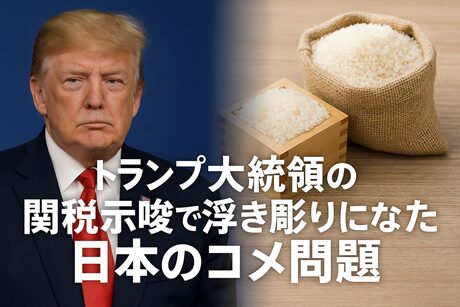
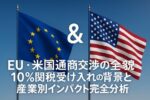
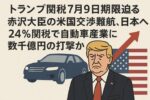

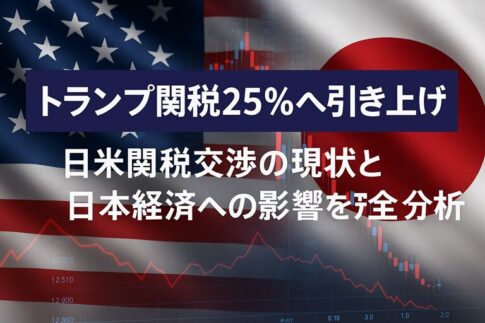
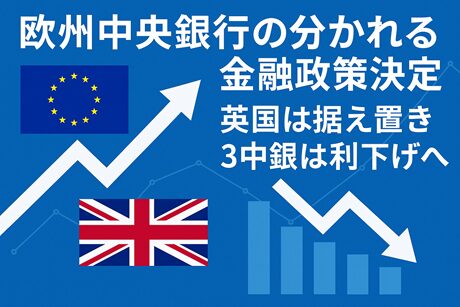
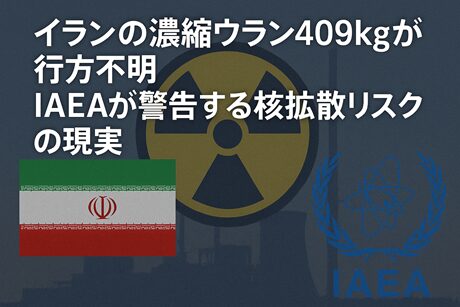
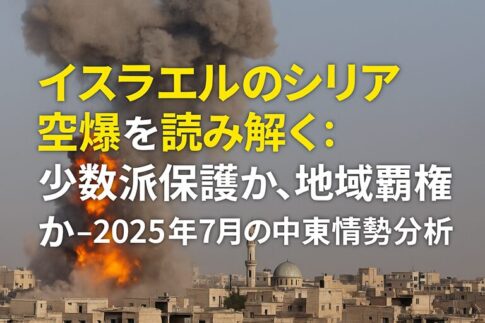
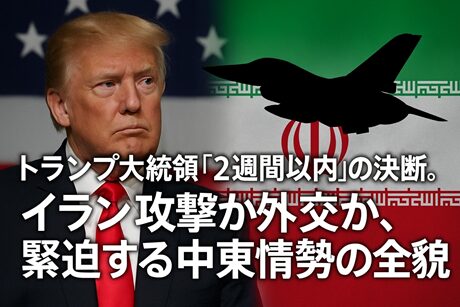
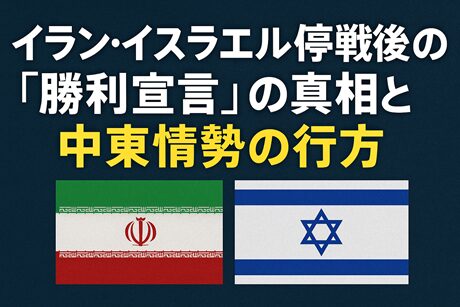
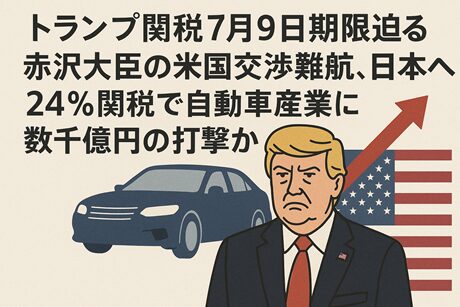

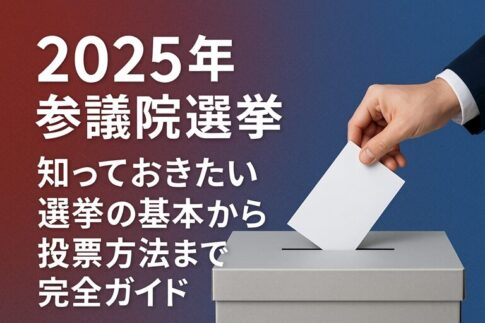
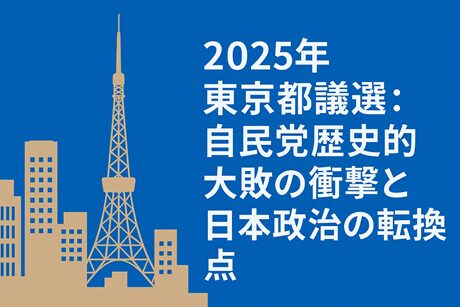



Leave a Reply